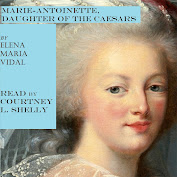
A short time afterwards the mother sent her children into the forest to get firewood. There they found a big tree which lay felled on the ground, and close by the trunk something was jumping backwards and forwards in the grass, but they could not make out what it was. When they came nearer they saw a dwarf with an old withered face and a snow-white beard a yard long. The end of the beard was caught in a crevice of the tree, and the little fellow was jumping about like a dog tied to a rope, and did not know what to do. ~from "Snow White and Rose Red" by the Brothers Grimm
One of my favorite fairy tales as a child was "
Snow White and Rose Red," one of the many stories collected by William and Jacob Grimm from the peasants of Germany in the early nineteenth century. According to
SurLaLune:
Snow White and Rose Red is of German origin with no known oral antecedents. The Grimms included the mostly original story in their collection and consequently popularized it. According to Stith Thompson, Wilhelm adapted the tale from a story, titled "The Ungrateful Dwarf,"by Caroline Stahl published in her own collection of German stories in 1818. The elements of the story beyond the broad theme of the Animal Bridegroom is uniquely German. Aarne and Thompson have classifed the tale as type 426: The Two Girls, The Bear, and The Dwarf. In this tale, as well as Grimm's The Lion and the Frog, the Animal Bridegroom is a kind and gentle beast whom the heroines do not find threatening. The girls are not required to "tame" the bear; they must deal with the wicked dwarf instead.
The tale has not appeared outside of a small geographic region in central Europe. Thompson considers the tale to be part of the animal bridegroom themes, including Beauty and the Beast, that are all related to the Cupid and Psyche myth (Thompson 1945).
Another tale that is related to the myth of Cupid and Psyche is "East of the Sun, West of the Moon" which will be the topic of a future post. There are many elements of "Snow White and Rose Red" which always charmed me, such as the roses, the angel, and living in solitude in a cottage in the woods. As explained by SurLaLune, the rose trees symbolize beauty and perfection, the angel's appearance indicates that the girls are pure of heart. It is one of the few tales in which the birth mother is alive but the father has died; widowhood sets the stage for poverty, but in spite of their dire straits, the family is happy and harmonious. The girls' fidelity and kindness are rewarded at the end, and the bear to whom they showed compassion ends up being a prince in disguise.
"Snow White and Rose Red" has a contemporary interpretation in Regina Doman's novel Shadow of the Bear. I cannot recommend highly enough Regina's books based upon the classic fairy tales as being especially wonderful for teenagers and young adults, although there are plenty of mature adults who enjoy them as well. It is fascinating how the tales which meant so much to our ancestors can still resonate so deeply with us today, especially when in the hands of a master story-teller.
Share






















